

Table of contents
- blue flowers
- white flowers
- Red flowers
- Violet flowers
- Pink flowers
- Orange flowers
- yellow flowers
Annual summer flowers beguile with a multifaceted spectacle of flowers and are an ornament for every garden. These plants complete their entire life cycle within a year, including flowering and growth, germination and fruiting. Summer flowers often come from tropical countries, so they are very sensitive to cold. The continued existence of the flower variety is guaranteed by the newly formed seeds.
blue flowers
cornflower

The cornflower has the botanical name Centaurea cyanus and often grows at the edge of fields and paths in the local latitudes. It seduces with intense blue flowers and is suitable as a summer flower in a mixed flower bed.
- Easy-care summer flower
- Often found as a wildflower
- Flowering time in June
- Suitable as a cut flower
- Grows up to 40 cm high
Blue lobelia
The blue lobelia is called Lobelia erinus in botany and is colloquially referred to as male-loyal. The perpetually blooming summer flower continues to develop blossoms until the heavier frosts. For the earliest possible start of flowering, you should sow early.
- Forms bright blue flowers
- Flowering period from May to November
- Sow already in February
- Plant seedlings in clusters
- Well suited as a traffic light plant
Maiden in the countryside
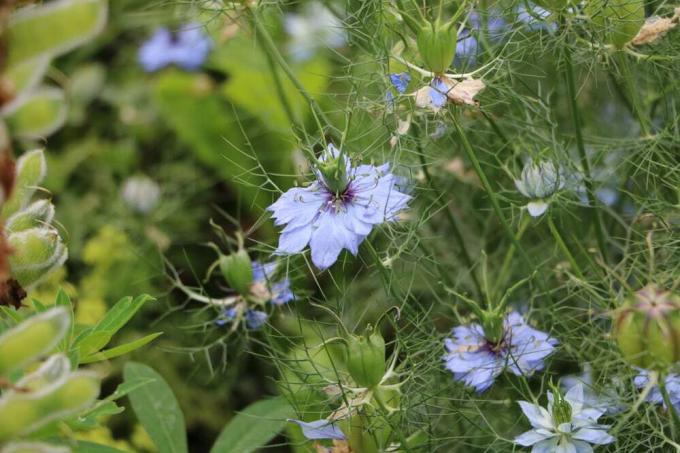
Botanically named Nigella damascena, the Maiden in the Green is a charming summer flower that produces feathery and filamentous sepals and leaves. The plant is very resistant to drought and is suitable for both borders and garden beds.
- Exceptional, light blue flowers
- Flowering period from June to September
- Growth height 20-30 cm
- Inflated fruit heads with capsules
- Well suited as a dried flower for arrangements
white flowers
Real chamomile

The real chamomile has the botanical name Matricaria chamomilla and also grows wild along the edges of fields and paths. Chamomile is a well-known medicinal plant with many health-promoting properties.
- White petals
- Heavily domed and yellow flower head
- Flowering period from May to August
- Healing medicinal plant
- Growth height is 20-30 cm
Busy Lizzie
In botany, hard-working Lizzie is called Impatiens spec. and earns its name from the fact that it blooms indefatigably, often from spring to the first frost in autumn. However, the summer flower is very sensitive to frost, so the gardener should only plant it after the ice saints in May.
- Flowering period from May to October
- Growth height up to 20 cm
- White flowers, also filled with white
- Suitable as a container plant for the balcony
- Needs partially shaded location
coriander
The coriander bears the botanical name Coriandrum sativum and is mainly known as a spice plant. In addition, the plant also forms beautiful flowers, but they are very sensitive to cold. For this reason, the seedlings should be cultivated indoors in spring.
- Flowering time from June
- Growth height between 20-50 cm
- Partially shaded location ideal for leaf growth
- Full sun provides a good seed crop
- Copes well with limescale in the soil and irrigation water
Indian Datura
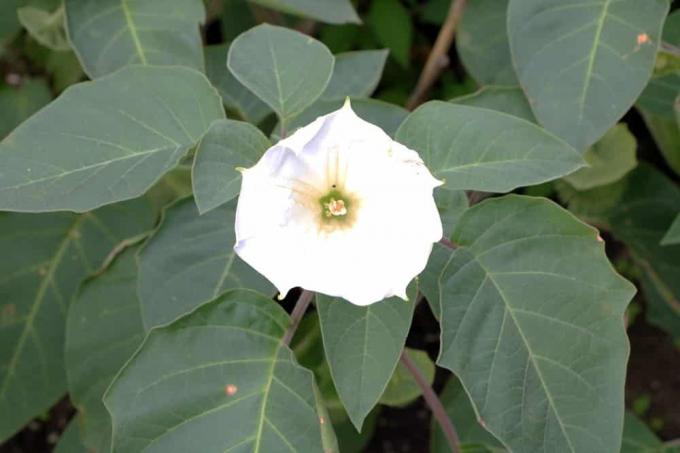
The thorn apple bears the botanical name Datura metel and is an undemanding summer flower that produces hairy shoots. Flowering occurs throughout the summer, from spring to the first frost. However, the plant is very poisonous, so not suitable for a family garden.
- White trumpet flowers grow extremely upright
- Flowering period from June to October
- Forms prickly fruits
- Sow seeds in indoor culture from February
- Plant seedlings outdoors from mid-May
Red flowers
poppy

In botany, the poppy is called papaver rhoeas and is often referred to colloquially as poppy or poppy. In the wild, this plant often grows near the cornflower, with which it forms a colorful contrast.
- Requires open ground
- Intensely bright red flowers
- Flowering time at the beginning of summer, from June
- Resistant to drought
- Growth height 30-50 cm
cigarette flowers

The cigarette flower has the botanical name Cuphea ignea and grows as a shrub-like summer flower. The unusual name derives from the flowers, which are reminiscent of glowing cigarettes.
- Bright red flowers
- Blooms from May to October
- Growth height 30-50 cm
- Does not tolerate extreme midday heat
- Can also be cultivated as a container plant
Violet flowers
morning glory

The morning glory has the botanical name Ipomoea purpurea and is very sensitive to frost, so it has to be sown again every spring. The plant is poisonous, especially its seeds can cause severe poisoning. For this reason, the morning glory is not suitable for family gardens.
- Purple flowers
- Flowering period from June to October
- Growth height is 0.5-3 m
- Doesn't grow too much
- Ideal as a blooming green fence
elf mirror
The elf mirror has the botanical name Nemesia strumosa and is a delightful summer flower, both for the garden and for the balcony and terrace. Depending on the variety, bicolored and multicolored flowers are also available.
- Violet flowers are reminiscent of violets
- Flowering period from June to August
- Growth height is between 30-40 cm
- Sow seeds in March and April
- Does well as a traffic light plant
liver balm

The liver balm has the botanical name Ageratum houstonianum and is a perennial summer flower that blooms from spring until the first frost. The liver balm must be cleaned out regularly so that it constantly develops new flowers. Due to the frost-sensitive properties, the plant should only be moved outdoors after the ice saints.
- Blue-purple flowers
- Flowering period from May to October
- Growth height 15-100 cm
- Needs a sunny location
- Flowering slows down in the shade
Pink flowers
Kornrade
The corn radish is called Agrostemma githago in botany and is a beautiful wild plant that also thrives well in a garden bed. However, the plant is highly poisonous, so it is not suitable for a garden used by families with children.
- Medium to tall growth, 30-90 cm
- Deep pink flowers
- Flowering time in early and midsummer, from June
- Ideal for mixed discounts
- Is well suited as a cut flower
mug mallow
The cup mallow is called Lavatera trimestris in botany and is a perpetually blooming summer flower that can be combined very well with other flowers as a border plant. The growth also spreads, so it is important to ensure sufficient planting distance.
- Pink flowers with darker veins
- Flowering period from July to September
- Grows 0.5-1 m in height
- Well suited as a cut flower
- Perennial growth
paper flower
The paper flower has the botanical name Xeranthemum annuum and is an undemanding summer flower that blooms from midsummer to early fall. The plant can be cut as a dried flower just before the buds are fully open. Then hang upside down, store in a cool and airy place to dry.
- Flowering period from July to September
- Forms papery flowers in pink
- Growth height is between 30-70 cm
- Needs full sun
- Ensure sufficient planting distance
Orange flowers
Nasturtium
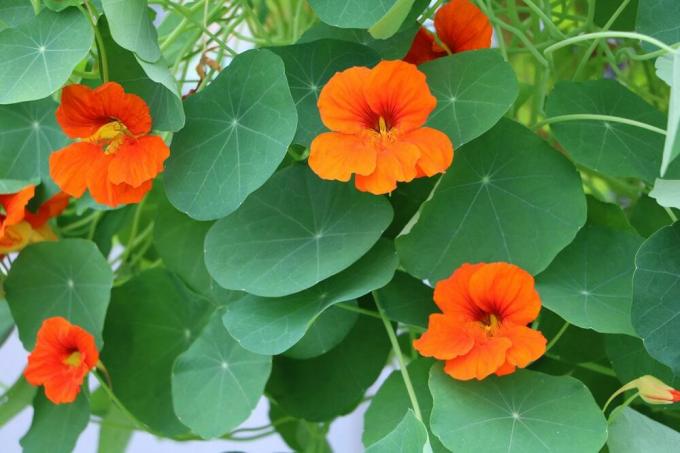
The nasturtium bears the botanical name Tropaeolum majus and is a versatile climbing plant with perennial flowering properties. The bright orange flowers look exotic and are formed throughout the summer.
- Growth height 1-3 m
- The edible leaves and flowers are special
- Suitable as ground cover, traffic light plant or for greening fences
- Flowering time usually from July to October
- Often blooms until frost
marigold

The marigold is called Calendula officinalis in botany and is a colorful permanent bloomer. As a rule, the seeds that are spread open only gradually, so that these flowering plants decorate the garden landscape from summer to the end of autumn.
- Flowering time from June to November
- Orange flowers tolerate light frost
- Growth height up to 30 cm
- Healing medicinal plant
- Multiply even after first seeding
goldbells
The goldbell bears the botanical name Sandersonia aurantiaca and is colloquially known as Chinese lantern, lantern flower and Christmas bell. The climbing tuberous plant does not tolerate too cold temperatures and is very sensitive to frost, so only plant out after the ice saints.
- Forms orange-yellow and bell-shaped flowers
- Flowering time in July
- Growth height is between 10-75 cm
- Grows upwards
- Beautiful cut flower
yellow flowers
sunflower

The sunflower has the botanical name Helianthus annuus and embellishes every garden landscape with its large flowers and powerful growth. Varieties with several stems are particularly recommended for the garden, as they flower much longer.
- Bright yellow flowers with brown heads
- Flowering time from July/August
- Particularly suitable as a cut flower for vases
- Growth height from 0.5 to an impressive 5 m
- Ideal as bee feed
slipper flower

The slipper flower is called Calceolaria integrifolia in botany and is a frugal permanent bloomer. The summer flower grows like a shrub and forms a large number of bright flowers that appear inflated.
- Bright yellow, slipper-like flowers
- Abundantly growing in panicles
- Flowering time from April to October
- Partial shade is ideal
- Fades quickly in too much sun
jester flower
The jester flower has the botanical name Mimulus tigrinus and forms exotic-looking flowers for many weeks throughout the summer. The plant is also suitable as a traffic light plant, as well as for keeping in pots on the balcony and terrace.
- Flowers are similar to orchids
- Bright yellow flowers are spotted red, spotted or mackerel
- Flowering period from June to August
- Growth height is up to 30 cm
- Needs a lot of sun and moist soil
blanket flower

The blanket flower is called Gaillardia pulchella in botany and is a perpetually blooming summer flower that is very well suited for borders and garden beds. The bright flowers are formed from summer to the first frost in autumn.
- Flowering period from June to October
- Growth height is up to 50 cm
- Suitable for cutting vases
- Does not tolerate late frosts
- Plant out from mid-May
 garden editorial
garden editorial I write about everything that interests me in my garden.
Learn more about annual plants

Datura in the garden: 6 information on reporting requirements and toxicity
Beautiful but very dangerous. We are talking about datura (datura), an annual and above all poisonous perennial with high potential for reproduction. The strikingly prickly, globular and walnut-sized fruits are eponymous. The flowers are very similar to those of the trumpet tree, which is also poisonous.

Annual and biennial herbs - 10 popular varieties
The right ingredient for the main course is still missing? The salad needs to be rounded off or refined? How practical if you can get the right herbs from your own garden! But when cultivating, the question often arises: Which varieties can be grown as annuals or perennials - and which ones taste best?

Annual plants: 10 beautiful perennials for the garden
Annual plants germinate, flower, and set seed, all within one growing season. Then they die off again, so that they are usually not frost hardy. However, the hardy seeds survive the cold season, so that annual plants sow themselves and come back the next year.
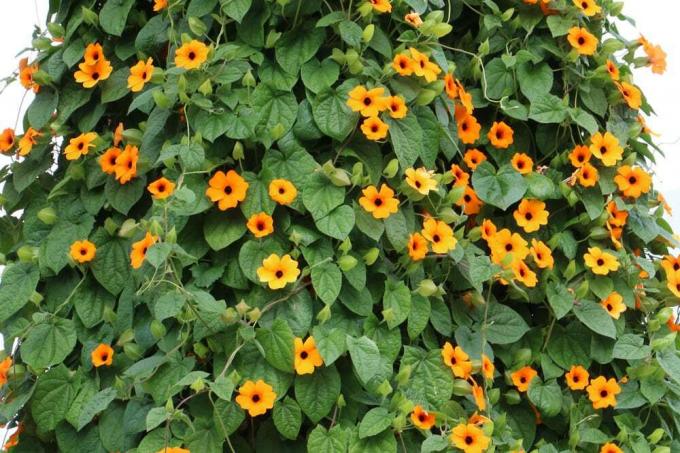
Annual climbing plants: 15 fast-growing and flowering plants
Annual climbing plants offer the same thing: quick and lush greenery for impatient gardeners, natural privacy screen for cozy spots or just decorative leaves and many colorful ones Blossoms. They are easy to cultivate and, with their variety of varieties, provide new variety every year.
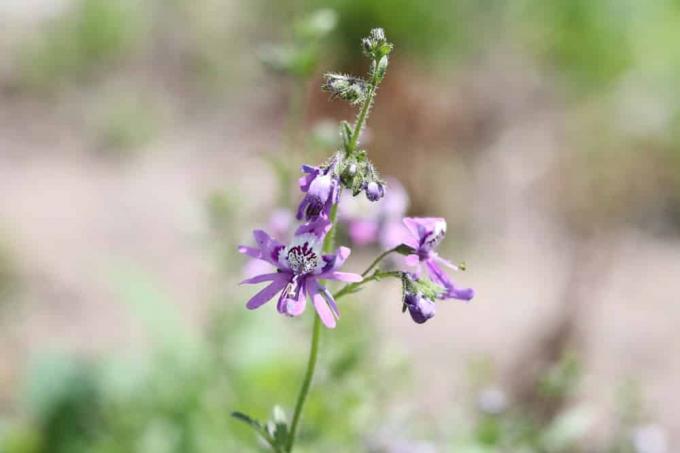
Caring for and overwintering farmer's orchid - schizanthus / split flower
Peasant orchid, split flower or schizanthus - as the orchid of the little man is also called, the nightshade plant enchants with its abundance of flowers and variety of colors. However, it can only do this if it is properly cared for and overwintered. Here we tell those who are interested what is important.
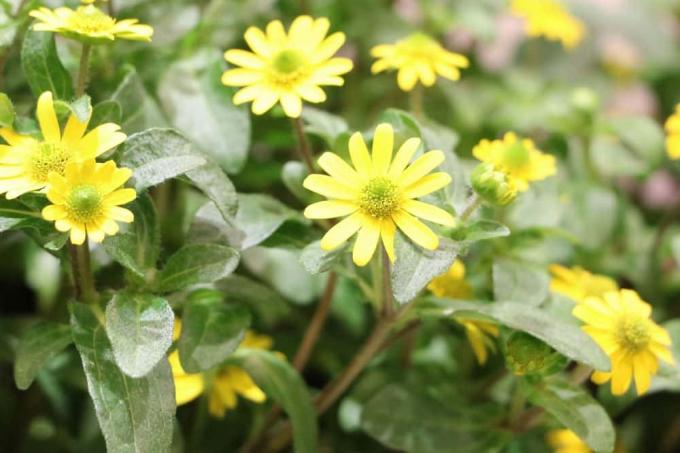
Hussar's Head, Sanvitalia – Care of Hussar's Head
The likeable hussar's head Sanvitalis procumbens blooms very persistently throughout the summer until the first frost. The garden, balcony and container plant is very easy to care for and constantly forms new buds. The blooms include all shades of yellow to orange flowers.



